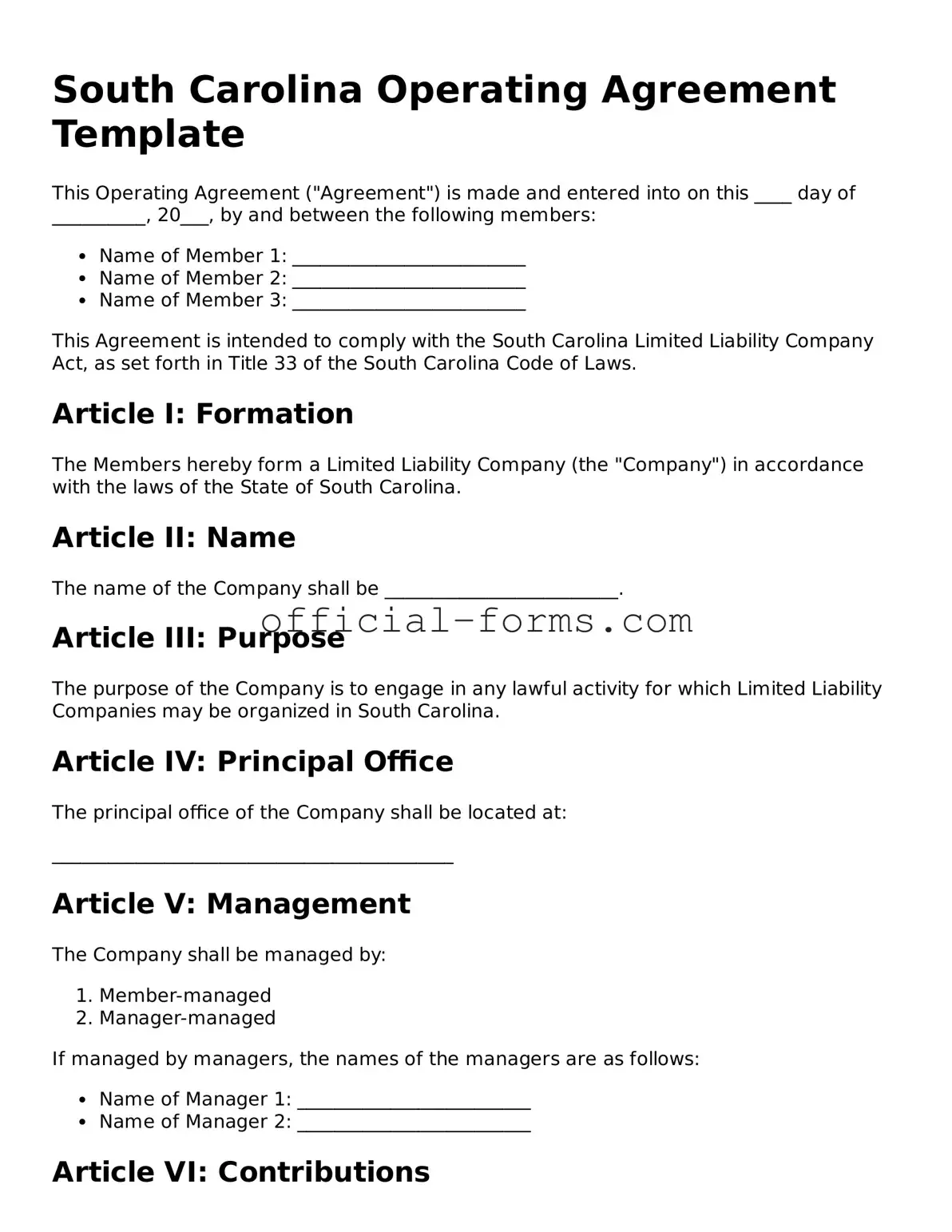Filling out the South Carolina Operating Agreement form is an important step for anyone looking to establish a limited liability company (LLC). However, many individuals make common mistakes that can lead to complications down the road. One frequent error is failing to include all necessary member information. Each member’s name, address, and ownership percentage should be clearly stated. Omitting any of this information can create confusion about ownership rights and responsibilities.
Another common mistake is neglecting to outline the management structure of the LLC. It is crucial to specify whether the company will be member-managed or manager-managed. This decision impacts how the business operates and who has decision-making authority. Without clarity in this area, disputes can arise among members regarding who is in charge.
People often overlook the importance of detailing the capital contributions of each member. The Operating Agreement should specify what each member is contributing to the business, whether it be cash, property, or services. Failing to document these contributions can lead to disagreements about ownership stakes and profit distributions in the future.
Additionally, many individuals do not address the procedures for adding or removing members. An Operating Agreement should include clear guidelines on how new members can be admitted and the process for a member to exit the company. Without these provisions, the LLC may face legal challenges or internal conflicts when changes occur.
Another mistake is not including a dispute resolution process. Conflicts among members are inevitable in any business. By outlining how disputes will be resolved—whether through mediation, arbitration, or another method—members can avoid lengthy and costly legal battles later on.
Finally, individuals frequently fail to review and update their Operating Agreement. As the business evolves, changes may be necessary to reflect new circumstances or member agreements. Regularly revisiting the Operating Agreement ensures that it remains relevant and legally sound. Ignoring this step can lead to outdated provisions that no longer serve the best interests of the LLC.
